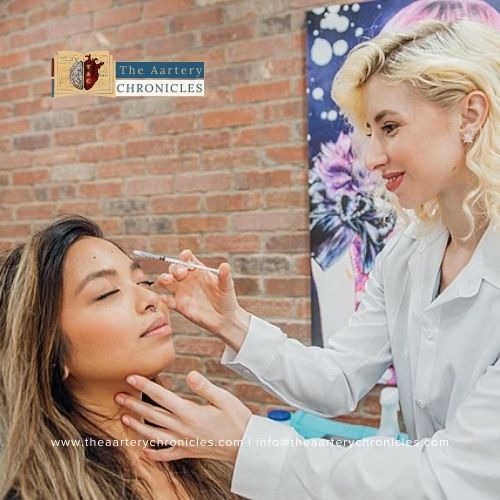

Assessing the Health Impacts of Botox: What You Need to Know
What is Botox?
Botox is a drug used for medicinal and cosmetic treatments. The bacterium Clostridium botulinum produces botulinum toxin which is used in the production of a protein called botulinum toxin type A, commonly known as Botox. According to FDA guidelines, botox can be used for health problems such as:
- Strabismus
- Underarm sweating
- Migraine
- Blepharospasm
- Cervical dystonia
- Overactive bladder
- It also addresses cosmetic concerns such as helping reduce fine lines, wrinkles and improve skin appearance
How do Botox injections work?
Botox injections work by utilizing botulinum toxin, which induces flaccid paralysis by inhibiting the release of the neurotransmitter acetylcholine from axon endings at the neuromuscular junction
When injected, Botox interferes with muscle signals from nerves, preventing the contraction or tensing up of targeted muscles. This action is key to alleviating symptoms of certain muscular conditions. Botox functions by blocking or weakening certain nerves, leading to the temporary paralysis or weakening of targeted muscles.
Overuse of Botox for cosmetic therapies:
According to the data from the American Society of plastic surgeons, there has been a reported 28 percent increase in botox usage among individuals aged 20-29.
Frozen face: The effects of Botox treatments typically last for several weeks. However, the same treatment must be repeated to maintain the results. Repeated Botox treatments can raise concerns.
Once the facial muscles get trained, the recurrence of wrinkles gradually reduces. However, some individuals may develop a dependence on Botox therapies, leading them to excessively repeat the procedures, resulting in a frozen appearance
While Botox offers the allure of timeless beauty, its true art lies in the delicate balance between enhancement and preservation, a canvas where skilled hands and informed choices create a masterpiece of ageless confidence.

Common side effects of Botox:
It’s important to note that individual reactions to botox may vary, and not everyone will experience all of the side effects stated below. Additionally, the severity and duration of side effects can differ.
Common side effects of Botox include redness, infection, slight pain, and bruising at the injection site. Other potential side effects may include:
- Nausea
- Dry eyes
- Irritation in the eyes
- Double vision
- Weak muscles
- Headache
- Dizziness
- Respiratory infections such as flu and cold
- Tearing (eyes)
- Sensitivity to light
- Reduced blinking
In some cases, Botox medications for issues like migraines, excessive sweating, and overactive bladder may lead to additional side effects such as neck pain, eyelid drooping, non-underarm sweating, back pain, urinary tract infection, and painful urination.

Long-term effects of Botox:
- Alteration in facial expressions: Prolonged use of Botulinum toxin can result in permanent changes in facial expressions, resulting in a mask-like or expressionless face. Certain situations may cause permanent changes in facial expression or a lack of facial animation.
- Neuromuscular changes: Botox gradually reduces bone density over time, increasing the risk of fractures. As Botox temporarily interrupts communication between muscles and nerves, it may lead to muscle thinning and weakness (atrophy).
- Weak muscles and skin discolouration: Over time Botox usage may cause muscle weakening as the muscles are being underused which causes veins underlying the face more visible. Skin discolouration around the site of injection. The incorrect technique of injection or if the toxin is injected deeply than required then it may cause long-term skin discolouration
Conclusion:
Botox is typically considered safe with minimal complications when used correctly. However, the potential risks associated with incorrect usage highlight the importance of caution. The adage “you become what you eat” underscores the significance of making healthy food choices, incorporating a variety of fruits and vegetables, staying well-hydrated with 2 to 3 liters of water daily, and engaging in regular exercise. Adhering to the principles of a healthy lifestyle can play a pivotal role in promoting skin health and overall well-being

Author: Sanika Pande
- Medicine and Diseases
- Nutrition and Diet
Lorem ipsum dolor sit amet, consectetur adipiscing elit. Ut elit tellus, luctus nec ullamcorper mattis, pulvinar dapibus leo.
















